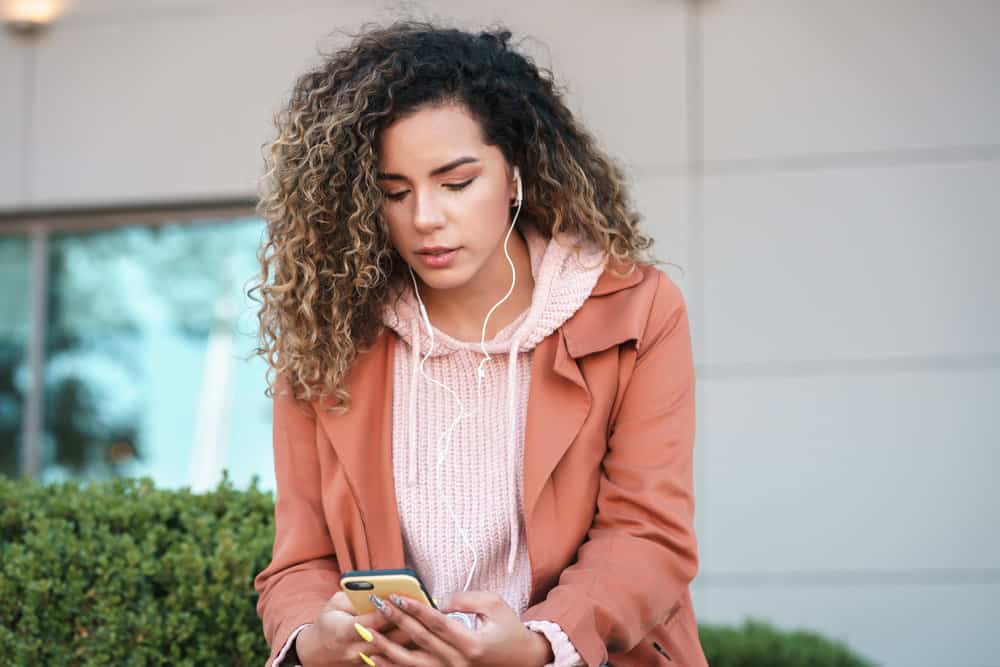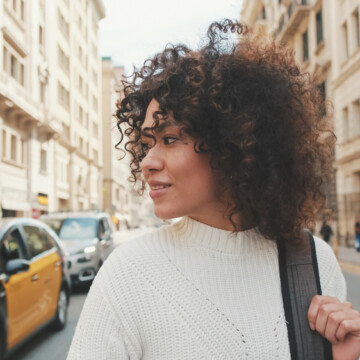
If you want to give your hair the best chance at being healthy, a good hair conditioning routine is non-negotiable. And one of the most effective ways to promote hair health is to use hair masks to inject moisture and nutrients into your strands.
But it’s not that simple; to reap all the benefits of any hair mask, you need to use it correctly and plan your hair routine around it so as not to undo its benefits.
One of the major questions many new naturals have is whether they should shampoo their hair after a hair mask. If you’re wondering the same, this article is precisely what you need. It will tell you everything you need to know about when to shampoo your hair when using a hair mask. Let's get right into it.
Table of Contents
Should I Shampoo After Using a Hair Mask on My Hair?
You should not shampoo your hair after a hair mask, and the reason will be apparent once you realize what hair masks do. Hair masks are hydrating and conditioning hair treatments meant to leave your hair softer, more hydrated, and more beautiful.
Hair masks usually contain two or more ingredients that give your hair the pick-me-up it needs to look and feel great.
What most hair masks have in common is that they are to be used post-shampooing as a form of conditioning. They sit on the hair for a certain amount of time and are to be rinsed away completely before continuing with your hair routine.

The benefits of a hair mask can be felt long after rinsing it away. That is if you don't shampoo your hair after using the mask.
Doing so will wash away the remnants and can even leave your hair dry - that's the worst thing you can do after going through the trouble of using a hair mask.
Why Shampoo Your Hair Before a Hair Mask?
The main reason you should shampoo your hair before applying a hair mask is that giving your hair a clean slate makes it better able to accept the nutrients and moisture from the mask. If your hair is coated in a film of debris, product buildup, and other gunk, it won't be able to absorb everything the hair mask contains.

Should You Condition Your Hair After a Hair Mask?
We’ve determined that you should not shampoo your hair after a hair mask. But should you condition your hair after a hair mask? The answer is not as straightforward.
There's no definitive one-size-fits-all answer for whether to apply a conditioner after a hair mask. It all depends on three things, and we’ll go over each of them below:
- The acidity of the mask. If you're using a mask that has a high acidity, it’ll close your hair cuticles and lock moisture inside. If you apply a conditioner on top of that, it'll be a waste of time, given that your cuticles will already be closed and able to retain the moisture from the air mask.
- The type of hair mask you use also influences whether you should condition after you use your hair mask. Some hair masks are incredibly hydrating. If you double up with a hydrating conditioner, you could end up with over-moisturized hair.
- How heavy the mask is. If your hair mask is light, you can use a conditioner or leave-in product after the hair mask. If it’s heavy, you may want to forgo the conditioner altogether.

In some cases, it's okay to apply a hair conditioner after a hair mask, but only if you're sure that your hair needs extra hydration. These cases will usually involve hair that is extremely damaged and dry or a mask that focuses more on protein than hydration.
Otherwise, you're better off skipping the hair conditioner and letting your hair soak in all the moisture from the hair mask. A good rule of thumb is to read the directions on your hair mask and see what the manufacturer recommends.
These instructions will guide you on whether to condition after using the hair mask.
But if there's no information available, reference the three criteria above and determine whether your hair needs an extra hit of moisture.
If you're still not sure what to do, try your hair mask with and without a conditioner. Then, compare the results and decide which works best for your hair.

Hair Mask Order for Color-Treated Hair
Color-treated hair needs a very specific hair care routine, which includes products that help to restructure the hair and preserve the color's integrity.
If you just bleached your hair blonde or a vibrant color, use a color revitalizing conditioner or color sealer after you use a hair mask. But only do so if the mask you're using is not for color-treated hair.
How Do Hair Masks Compare to Conditioners?
Hair masks and hair conditioners are not the same things. Conditioners are for maintaining hair health and hydration and restoring moisture after shampooing.
Hair masks provide a deeper layer of conditioning that can restore hair that is overly dry, damaged, or brittle. So, hair masks are more nourishing and conditioning than hair conditioners.

How to Use a Hair Mask
Using hair masks is easy. Here's how. Start by shampooing your hair with a gentle yet effective cleanser and then squeeze out the excess water from your hair.
Take a generous amount of hair mask and apply it to your hair strands, focusing especially on the ends. If you have long or thick hair, use more product and apply the mask in sections.
Put on a shower cap and leave the hair mask on for 10-20 minutes or longer if indicated on the packaging, then rinse it off with lukewarm water. Then, you can proceed with the rest of your hair care routine.
*Avoid using hot water as it can strip your hair of the nutrients and oils from the hair mask.

If you'd like, you can also use your hair mask as a detangling aid. When you apply the mask to your hair, you'll notice that your hair becomes slippery. The slipperier your hair is, the better it is for detangling.
So, after applying your hair mask to your damp hair, you can pull out your wide-tooth comb and go to work. Start at your ends and move upward to your roots to minimize pain and save time.
How Often to Use a Hair Mask
How often you should use hair masks depends on the condition of your hair. Generally, if you have healthy hair, you can use a hair mask once or twice a month.
And if your hair is parched or damaged, use a hair mask once per week or even a few times per week. Doing so will give your hair the moisture and love it needs to thrive.

When you use a hair mask often, it's important to be on the lookout for product buildup. To avoid product buildup, use a clarifying shampoo once or twice a month to get rid of all the hair mask build-up.
You can find an effective clarifying shampoo online, at your local beauty supply store, or at big box department stores. Look for shampoos that say deep cleansing or clarifying.
In a nutshell, hair masks should always come after shampooing and can sometimes be followed by a hair conditioner - depending on the type of hair mask you're using and your hair's individual needs.
Keep these tips in mind to ensure you get the most out of your hair masks. We hope you found all the information you were looking for and that you continue to give your hair the best possible care.




